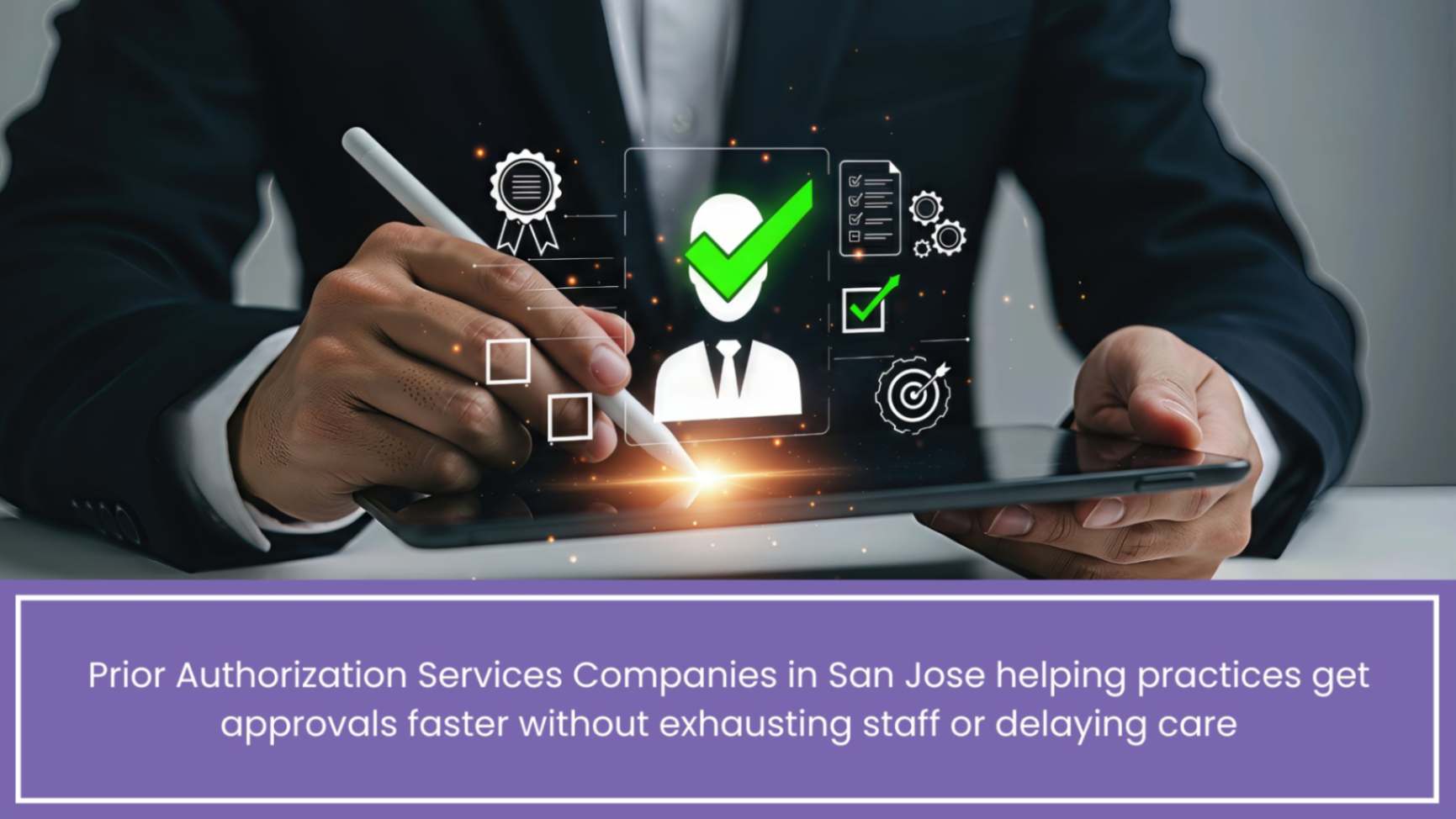How do Providers avoid Mistakes In RCM Strategies?
Revenue Cycle Management (RCM) is the lifeline of any medical practice, yet so many strategies fail to deliver consistent results. From denial mismanagement and compliance fatigue to outdated workflows and over-reliance on technology, hidden inefficiencies often drain revenue without notice. Practices also struggle with scaling, patient collections, and using data effectively. This blog explores the most common reasons RCM strategies collapse and offers practical insights on how providers can avoid costly mistakes. Learn how outsourcing to experts like Practolytics ensures stronger denial management, compliance, analytics, and scalability—turning your RCM into a true growth engine.
Revenue Cycle Management (RCM) is often described as the financial heartbeat of a medical practice. When it flows well, the entire practice feels the difference—steady cash flow, minimal denials, and happier patients. But when it doesn’t, even the most advanced practice can feel like it’s bleeding money.
The real question isn’t whether RCM is important (we all know it is). The question is: How do providers avoid mistakes in RCM strategies, even when practices try hard to get it right?
At Practolytics, after working with hundreds of practices across 31 states and more than 28 medical specialties, we’ve seen patterns—common mistakes, overlooked complexities, and hidden inefficiencies that quietly eat away at revenue. Let’s take a deep dive into why strategies collapse, what practices should watch out for, and how you can avoid repeating the same mistakes.
Table of Contents
Illusion of Control in RCM
Most providers believe they have control over their RCM because they’ve hired the right staff or implemented a billing system. But here’s the catch: control isn’t the same as efficiency.
You can have the most hardworking staff, but if they’re drowning in outdated workflows, missing payer-specific updates, or spending hours chasing denials, your RCM is still underperforming. According to MGMA, 70% of practices report revenue leakage due to poor denial management alone.
The illusion of control makes practices complacent. They assume a working system is a good system—but in truth, inefficiencies hide in plain sight.
Data Blindness: When Numbers Don’t Tell the Story
Every modern practice has data. But here’s the hard truth: not every practice knows how to use it.
RCM is data-driven. Yet many practices track only surface-level numbers: claims submitted, payments received, denials faced. What they often miss are deeper, more actionable insights like payer-specific denial patterns, claim cycle timelines, or underpayments compared to contract terms.
When these insights are ignored, practices keep repeating the same mistakes without realizing it.
Here’s a look at how practices usually measure success versus how they should be measuring it:
Difference Between Surface Metrics and Actionable Metrics!
|
What Practices Usually Track |
Why It’s Not Enough |
What They Should Track Instead |
Why It Matters |
|
Number of claims submitted |
High volume doesn’t equal high accuracy |
Percentage of clean claims submitted |
Reveals if claims are correctly coded and less likely to be denied |
|
Total denials received |
Denials alone don’t show the cause |
Denial trends by payer/procedure |
Identifies recurring issues that can be fixed at the root |
|
Days in A/R (average) |
Averages hide problem claims |
A/R by payer and claim age |
Uncovers whether specific payers delay payments |
|
Payment collected |
Simple number |
Net collection ratio |
Shows how much of your entitled revenue you’re actually receiving |
|
Patient balances due |
Just an end number |
Patient collection rate & time to collect |
Indicates patient communication and billing effectiveness |
Looking at deeper, actionable metrics can be the difference between surviving and thriving. A practice that knows where the leakage is happening can plug the holes before revenue slips away.
Why Overworked Staff Can Break Your Revenue Cycle?
Even the smartest software won’t fix an RCM strategy if the people behind it are overwhelmed. A common reason strategies fail is the human bottleneck—staff juggling too many responsibilities without the right tools or processes.
In fact, AMA research suggests that administrative burdens eat up nearly 15 hours per physician weekly, a huge chunk of time that could be spent on patients. Billers and coders face the same reality.
- A front-office staff member misses capturing patient insurance updates.
- A coder rushes through complex charts, missing modifier details.
- A billing clerk resubmits denials without correcting the root issue.
The result? Revenue stalls, patients get frustrated, and staff burnout skyrockets.
Compliance Isn’t Just a Checkbox!
Here’s another silent killer of RCM strategies: compliance fatigue.
Many practices treat HIPAA, payer compliance, and coding rules as checkboxes. But compliance isn’t static—it changes constantly. CMS alone makes thousands of updates every year. One missed update can lead to massive revenue leakage or even audits.
Take this example: in 2023, CMS reported that improper payments in Medicare Fee-for-Service programs reached $31.2 billion. A large portion came from documentation and coding errors—mistakes that could have been avoided with a stronger compliance focus.
So, when practices ignore compliance or treat it lightly, their RCM strategy is bound to stumble.
When Technology Works… and When It Doesn’t
Practices often believe buying expensive RCM software will solve their problems. The reality? Technology only works if it’s used strategically.
Here are some pitfalls we’ve seen:
- Systems not fully integrated with EHRs, forcing staff to re-enter data.
- Over-reliance on automation without manual oversight.
- Lack of training, leading to staff using only 20% of the system’s capability.
Technology becomes a double-edged sword—it can make or break your RCM. Without proper setup, monitoring, and human alignment, it’s just another costly tool.
When Scaling Breaks the System?
Here’s something many practices underestimate: growth isn’t always good if your RCM can’t handle it.
A single-provider clinic moving to a three-provider group or adding new specialties often sees their billing complexity skyrocket. What worked for 100 claims a week crumbles under the pressure of 500 claims.
We’ve seen this firsthand at Practolytics. Practices expanding services often face unexpected challenges: different payer contracts, higher patient responsibility, more complex coding rules. Without adjusting RCM processes, their growth backfires.
Cost of Denial Mismanagement
If there’s one area where most RCM strategies collapse, it’s denial management.
Denials are inevitable—but unmanaged denials are dangerous. Industry benchmarks show that 90% of denials are preventable, yet 65% are never resubmitted.
That’s pure revenue left on the table.
Why?
- Lack of follow-up staff.
- No tracking of denial reasons.
- Focus on resubmission instead of correction.
It’s like treating a fever without checking what caused it—you’ll never cure the illness.
Hidden Cost of Denial Mismanagement
|
Denial Cause |
Industry Average Denial % |
Typical Loss If Ignored (per $1M claims) |
What Effective RCM Does Differently |
|
Coding errors |
20–25% |
$200K–$250K lost revenue |
Ongoing coder training + AI-driven audits |
|
Eligibility issues |
15–20% |
$150K–$200K lost revenue |
Real-time eligibility verification tools |
|
Missing documentation |
10–12% |
$100K–$120K lost revenue |
Proactive document checklists |
|
Prior authorization |
7–10% |
$70K–$100K lost revenue |
Dedicated PA management teams |
|
Late filing |
5–7% |
$50K–$70K lost revenue |
Automated filing deadline alerts |
Denials aren’t just numbers—they’re silent killers of revenue. Every ignored denial is money your practice rightfully earned but never collected.
Patients as the “New Payers”
Another layer of complexity is the shift toward patient responsibility. With high-deductible health plans, patients now account for nearly 30% of practice revenue.
This changes everything. Practices that don’t adjust their RCM to handle patient collections—clear statements, payment plans, digital tools—end up with ballooning A/R.
Ignoring this shift is one of the biggest reasons RCM strategies crumble today.
Why Outsourcing Becomes the Safety Net?
After reading all this, you might be thinking: “That’s a lot to manage. How can a small or mid-sized practice possibly keep up?”
The truth is, many practices can’t—at least not alone. And that’s where outsourcing comes in.
Outsourcing RCM isn’t about losing control. It’s about gaining back time, expertise, and consistency. When you partner with a company like Practolytics, you’re not just hiring billers—you’re plugging into a system that has already solved these problems for hundreds of providers.
Here’s what outsourcing achieves:
- Expert denial management with payer-specific knowledge.
- Advanced analytics that reveal where revenue is leaking.
- Scalable systems that grow with your practice.
- Compliance baked into every step.
- Patient billing strategies that actually improve collections.
At Practolytics, we process over 5 million claims annually and work with 1,400+ active providers across the U.S. We’ve built systems that are HIPAA-compliant, data-driven, and fine-tuned for every specialty we serve.
Outsourcing RCM services doesn’t just fix broken RCM strategies—it prevents them from failing in the first place.
Final Thoughts!
Here’s the thing—most RCM strategies don’t flop because practices don’t care. They flop because RCM is honestly a beast. On the outside, it feels straightforward: send claims, get paid. But the reality? It’s messy. You’ve got payers changing rules like it’s a game of musical chairs, compliance updates that never stop, denials piling up, patient balances growing, and suddenly… the system you thought was “working fine” starts leaking money everywhere.
And the tricky part is, many practices don’t even realize it. They look at the basic numbers—claims submitted, payments received—and think all is well. But those numbers don’t tell the whole story. They don’t show you the underpayments you’re quietly absorbing, the denial trends that keep repeating, or how much revenue you’re leaving uncollected because patients just don’t understand their bills. Without digging deeper, you end up stuck in the same loop, losing money without even noticing.
The good news? This isn’t permanent. When you zoom out, track the right data, and tackle denials and compliance head-on, RCM can actually become one of the strongest growth engines for your practice. But here’s the honest truth—doing it all in-house can be exhausting.
That’s why so many practices lean on partners like Practolytics. We’ve been in this game for over 20 years, working with 1,400+ providers and processing millions of claims every year. We’ve seen the leaks, fixed them, and built systems that keep revenue flowing. So you don’t have to stress over the “business side” of medicine—you get to focus on your patients, while we make sure your hard-earned dollars actually land in your bank account.
ALSO READ – Essential Tips for Error-Free Orthopedic Billing and Coding: Boost Your Practice’s Financial Health
Talk to Medical Billing Expert Today — Get a Free Demo Now!






